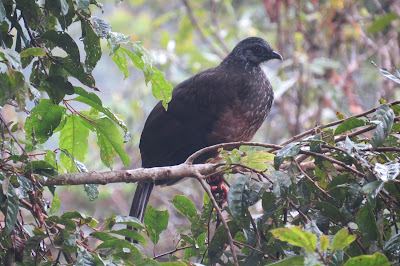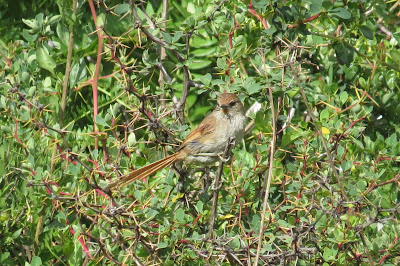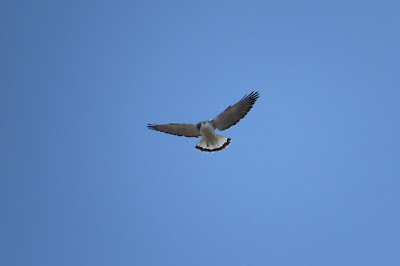http://manurainforestperu.com/custom_manu_amazon_tour_4_days.html
Custom Manu Amazon Tour 4 Days
This tour is designed for a long enough stay to experience the authentic Amazonian jungle at our private property in the Manu Cultural Zone. Better lodging, longer time at location, and opportunities to see wildlife increase on this extended tour.
Afterwards, enjoy an excursion in tubing along the Palotoa River's crystal clear waters in the middle of the jungle. Wildlife abounds: waterfowl and migratory birds, four types of monkeys, and squirrels jump between trees near the river. Later we arrive at the river Alto Madre De Dios, where we take our boat on the winding river that leads us to the hostel Manu Rainforest Lodge for an evening in comfort and a delicious dinner. A guided night walk is possible.
DAY 01: CUSCO – CLOUD FOREST - MANU RAINFOREST LODGE
We’ll pick you up at your hotel at 4:30 a.m. to start our busy day of travel and tour. We have much to see and lots to do! It’s a day full of picturesque visits, starting with the beautiful chullpas of Ninamarca (pre-Inca tombs); then Paucartambo an impressive colonial town with historic bridges and buildings. From there we will make our way to Acjanaco, paving the way to the entry of the biosphere of Manu National Park with its impressive cloud forest: home to wild bromeliads, orchids and colorful birds (Rupicola peruviana), woolly and capuchin monkeys, as well as colorful butterflies and rare insects. In the afternoon we will arrive on the banks of the river Alto Madre de Dios where we will leave the minivan. Here waiting for us is a traditional wooden boat to cruise the river watching for birds and river creatures until we reach our comfortable hostel in the jungle.
Overnight in Manu Rainforest Lodge.
DAY 02: MANU RAINFOREST LODGE - ROBLES TREEHOUSE LODGES
Our ecological tours at Robles Tours offer excellent experiences full of adventure and awe at the untamed virgin forest and its inhabitants of the great Amazon basin. After breakfast we travel by boat 45 minutes via Rio Palotoa to reach Robles Tree House Lodge. Once we arrive we will have time available to explore the heart of our ecological reserve. The evening is reserved for a night walk in search of creatures such as: snakes, amphibians, spiders and monkeys. In the darkness of night we’ll have the spectacle of fireflies lighting up the sky and shadows of bats attracted by our lanterns. Most certainly we’ll see timid tarantulas that go out hunting in the dark and sparkling stars that light our way.
Overnight in Robles Tree House and private reserve.
Our ecological tours at Robles Tours offer excellent experiences full of adventure and awe at the untamed virgin forest and its inhabitants of the great Amazon basin. After breakfast we travel by boat 45 minutes via Rio Palotoa to reach Robles Tree House Lodge. Once we arrive we will have time available to explore the heart of our ecological reserve. The evening is reserved for a night walk in search of creatures such as: snakes, amphibians, spiders and monkeys. In the darkness of night we’ll have the spectacle of fireflies lighting up the sky and shadows of bats attracted by our lanterns. Most certainly we’ll see timid tarantulas that go out hunting in the dark and sparkling stars that light our way.
Overnight in Robles Tree House and private reserve.
DAY 03: PARROT CLAY LICK, WALKS & RIVER SWIMMING
As usual each morning hundreds of parrots, parakeets, macaws (Aras), gather to eat the clay rich in minerals at the lick (collpa) as part of their diet. To enjoy this activity we have to wake up at 5:00 a.m. and at 5:20 a.m. we should be in the hideout, across from the Parrot collpa, keeping silence and calmness to watch groups of five to ten gather and settle en masse on the rock wall and consume the rich mineral clay. We'll also have a good chance to see troupes of monkeys, toucans, and woodpeckers that often fly from one side of the river to the other. Here might also get to spot the shy and playful river otters.
Afterwards, enjoy an excursion in tubing along the Palotoa River's crystal clear waters in the middle of the jungle. Wildlife abounds: waterfowl and migratory birds, four types of monkeys, and squirrels jump between trees near the river. Later we arrive at the river Alto Madre De Dios, where we take our boat on the winding river that leads us to the hostel Manu Rainforest Lodge for an evening in comfort and a delicious dinner. A guided night walk is possible.
DAY 04: MANU RAINFOREST LODGE-CUSCO
Today is a long travel day in minivan back to Cusco. From the vehicle you can still enjoy the different landscapes that this jungle and mountain passage offers. Photo opportunities abound. We will arrive back at Cusco’s Plaza de Armas at about 5:30 p.m. With big thanks and a warm hug we will say goodbye but only until the next time, because we truly hope to see you again!
What’s included in the trip?
Manu Rainforest Peru rates include all meals, soft drinks, hot drinks, sparkling wine and beer with meals, accommodations at lodges, excursions with knowledgeable naturalist guides, professional cook (chef), the Manu National Park entrance fee, night walks. We will provide private transportation (boat & minivan). Breakfast and lunch will be available on your last day and are included in the rate. Tubing in the river is also included on your amazon adventure. One great advantage of our “all inclusive” rates is that you will know in advance exactly how much you’re Manu Rainforest Peru vacation will cost. Your only extra expenses will be drinks, boutique purchases, First day breakfast, and Drinking water first day, Personal expenses, we provide gum boots for wetland excursions.
What should I bring to the Jungle?
Please bring comfortable walking shoes, lightweight long pants and long sleeved shirts for our excursions, as well as a wide-brimmed hat, sunscreen, extra socks, Dark-colored clothing, Swimwear, sandals and a small personal towel, Water bottle or canteen, mosquito repellant with DEET, and of course your camera with charger and extra batteries, and waterproof ponchos with hoods to protect against rain, torch/flashlight with extra battery. You may wish to include some small items that you can give away to the locals (t-shirts, pens and candies are especially prized). During meals in the dining room we ask our guests to wear casual clothing and shoes or sandals.
Binoculars - Very important to enjoy wild life (Vortex 10 x 42, Bushnell, Nikon 8 x 42)


























 We are a family business specialized in Tours to Manu and trips to the virgin forests.
We are a family business specialized in Tours to Manu and trips to the virgin forests.